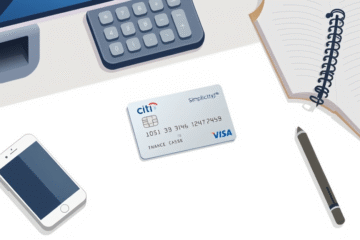Vehicle Leasing has become an increasingly popular alternative to traditional car purchasing in today’s automotive market.
This flexible financing solution offers consumers a way to drive new vehicles without the commitment of full ownership.
Understanding the intricacies of leasing is essential for making informed decisions about vehicle acquisition, from monthly payments to end-of-term options.
This comprehensive guide will explore the fundamental aspects of vehicle leasing, helping you determine if it’s the right choice for your transportation needs.
Understanding Vehicle Leasing
Vehicle leasing is a financial arrangement that allows consumers to use a car for a fixed period, typically ranging from two to four years. Rather than purchasing the vehicle, the lessee pays monthly installments for its use. This flexibility has made leasing increasingly popular among consumers who wish to avoid the hefty upfront cost of outright ownership.
One major benefit of leasing is the ability to drive a brand-new vehicle every few years without dealing with depreciation. This grants consumers access to newer models with the latest technology features. Leasing often involves lower monthly payments compared to financing the purchase of a vehicle. Additionally, many leases include maintenance plans, reducing the burden of unexpected repair costs. Furthermore, there are generally no selling hassles at the lease’s end, as the car can be returned or upgraded.
- Drive new vehicles frequently
- Lower monthly payments
- Included maintenance plans
- No depreciation worries
Moreover, consumers enjoy tax benefits, especially for business use; and leasing helps maintain liquidity as one doesn’t tie up capital in vehicle ownership. With all these advantages, leasing has positioned itself as a versatile option for many. According to Car and Driver’s leasing insights, “Leasing a new vehicle not only offers flexibility but also peace of mind knowing you’d be driving a modern car with fewer financial strings attached.”
How Vehicle Leasing Works
1. Begin by browsing various dealerships or leasing companies to select a vehicle that suits your needs and budget.
Consider factors like brand, model, and mileage allowances, which can impact the terms of the lease.
2. Calculate your finances, including the initial payment or deposit required, as well as the monthly installment costs.
Make sure these payments fit within your financial plan.
3. Understand key terms such as ‘lessee’ and ‘lessor’.
The lessee is the individual leasing the car, responsible for making payments and maintaining the vehicle.
The lessor is the financial entity or dealership owning the vehicle, providing the lease to the lessee.
4. Negotiate terms related to the lease, ensuring clarity about mileage limits, maintenance responsibilities, and end-of-lease options.
These options may include purchasing the vehicle, returning it, or renewing the lease.
5. Sign the lease agreement, binding you legally to the terms set by the lessor.
Ensure all conditions are reviewed and understood before signing.
Financial Advantages of Vehicle Leasing
Choosing to lease a vehicle offers distinct financial benefits compared to purchasing outright. One major advantage is the lower monthly payments.
Chase lease benefits highlight that leasing typically results in a lower cost per month than a traditional car loan.
Tax advantages are another significant factor, especially for businesses that can deduct lease payments as business expenses.
The tax benefits of car leasing can lead to substantial savings annually.
Furthermore, maintenance costs in a lease are generally lower. Vehicles often remain under warranty during the lease term, eliminating unexpected repair expenses (source: Amica Insurance).
| Aspect | Leasing | Outright Purchase |
|---|---|---|
| Monthly Payments | Lower | Higher |
| Tax Benefits | Significant | Limited |
| Maintenance Costs | Predominately Covered | Owner’s Responsibility |
Lease Terms and Options
- Lease Duration: Most car leases last between 24 and 36 months, offering flexibility without long-term commitment. This duration often aligns with the manufacturer’s warranty period.
- Mileage Limits: Lease agreements typically include mileage limits, usually between 10,000 to 15,000 miles per year. Exceeding limits results in additional charges.
- Available Customizations: Although lease agreements may restrict modifications, some allow minor changes. Examples include adding features like roof racks or specific seat covers.
- Early Buyout Options: Some leases offer early purchase options with set terms for buying the vehicle before the lease ends.
- Advantages of High-Mileage Leases: Some leases provide high-mileage options for individuals with greater travel needs, preventing unexpected additional charges.
- Be aware of wear and tear policies, which may stipulate allowable vehicle conditions at the lease’s end.
Opting for a lease requires understanding terms, mileage limits, and the flexibility of early buyout, impacting overall cost.
End of Lease Considerations
At the end of a vehicle lease, individuals face several options that warrant careful consideration. The choice can significantly impact financial planning, so understanding each path is crucial.
Purchasing the leased vehicle is often the most considered option. It involves paying the residual value determined at lease signing. This value may be advantageous if the car’s market value exceeds the residual.
Alternatively, you might decide to extend the lease to keep the vehicle longer without purchasing. Extending a lease can offer flexibility and avoid new costs.
Returning the vehicle requires attention to potential extra charges, such as excess mileage fees and wear-and-tear penalties. Regular maintenance and inspection can prevent unpleasant surprises during the return process.
Consider these primary choices:
- Purchase the vehicle: Assess if the residual value is lower than current market prices.
- Extend the lease: Continue using the car with potentially lower payments.
- Return the vehicle: Ensure the car meets lease-end inspection standards to avoid fees.
Understanding these options lets you make an informed decision that aligns with your current needs and financial goals. For specific insights, see this article.
Vehicle leasing represents a viable alternative for those seeking flexibility in their automotive choices.
By understanding the terms, benefits, and considerations involved, consumers can make informed decisions that align with their financial goals and lifestyle preferences.



0 Comments